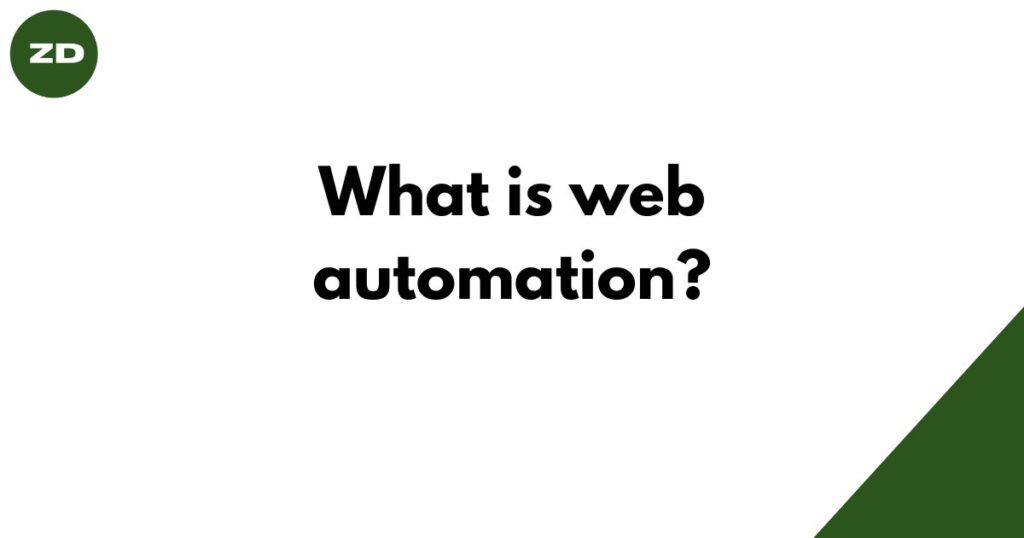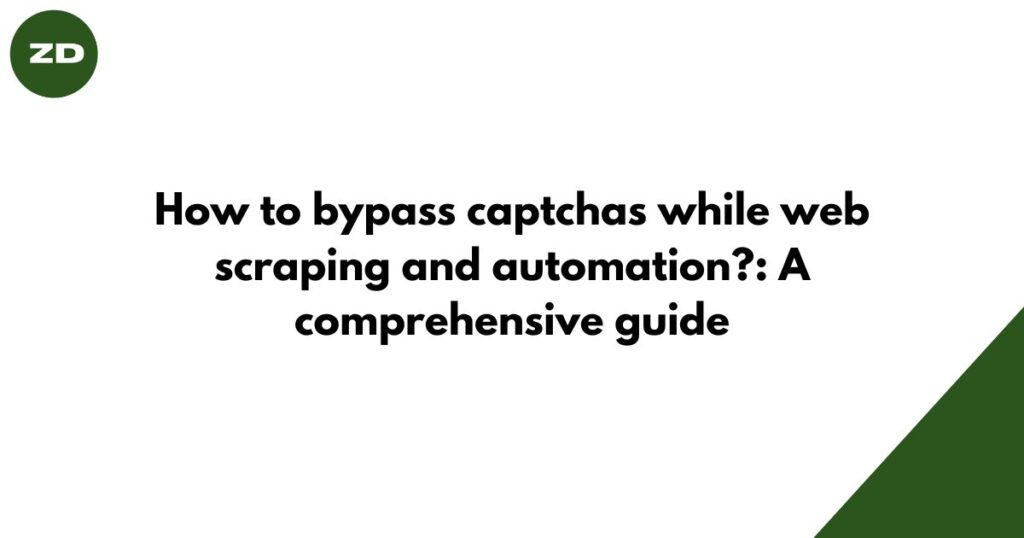Table of Contents
What is Web Automation?
Web Automation involves the use of software or programs to simulate human actions on the internet. These actions could range from simple tasks like filling out online forms, clicking buttons, and navigating websites, to more complex actions such as extracting data from websites, performing repetitive tasks, and even making decisions based on predefined criteria.
Example of Web Automation:
Imagine you’re a social media manager responsible for posting updates on various platforms. Manually posting the same content across Facebook, Twitter, and Instagram can be time-consuming. With web automation, you can streamline this process. Now, consider a web automation script, that logs into your accounts, crafts and schedules posts, attaches images, and even adds relevant hashtags. This replicates the actions you’d perform as a human user.
Sounds like a game-changer, right?
Benefits of Web Automation:
- Time Savings: One of the most significant benefits is the time saved. Repetitive and time-consuming tasks that would take hours or even days for a human to complete manually can be done in seconds or minutes through automation.
- Increased Efficiency: Automation ensures consistency and reduces the chances of human error. Tasks are performed with precision every time they are executed.
- Cost Reduction: By reducing the need for manual labor, web automation can lead to significant cost savings for businesses. Only a few people may be required to perform tasks, leading to lower labor costs.
- Improved Accuracy: Automation eliminates the risk of human errors, such as typos, data entry mistakes, and oversight. This leads to more accurate data and outcomes.
- 24/7 Availability: Automated processes can run 24/7, allowing tasks to be completed during non-business hours or even in different time zones.
- Scalability: As businesses grow, the volume of tasks often increases. Automation can easily scale to handle larger workloads without the need for an increase in human resources.
- Enhanced Productivity: Employees can focus on more creative and strategic tasks rather than repetitive, mundane activities. This can boost overall employee morale and productivity.
- Data Management: Automation can help with data extraction, processing, and storage. It ensures data is consistently organized and available for analysis and decision-making.
Where web automation is used?
- Data Extraction and Web Scraping:
Web automation is widely used for extracting data from websites. This can include gathering information like product prices, customer reviews, news articles, or stock market data. Automation tools can navigate through websites, collect desired data, and organize it for analysis or further processing. - E-commerce Price Monitoring:
Businesses can use web automation to monitor competitor prices in the e-commerce space. Automation tools can regularly check the prices of products on various online stores and provide insights for adjusting pricing strategies. - Automated Testing:
Web automation is essential for testing web applications. Automated tests simulate user interactions and can identify bugs, performance issues, or compatibility problems, ensuring a smooth user experience. - Social Media Management:
Social media managers can automate posting, scheduling, and engagement tasks. Automation tools can post updates, respond to comments, and follow/unfollow users on platforms like Instagram, Twitter, and Facebook. - Content Aggregation:
Web automation is used to gather content from different sources across the web, such as news articles, blog posts, or videos. This content can then be curated and presented to users on a single platform. - Form Filling and Data Entry:
Automating form submissions and data entry tasks saves time for repetitive actions like filling out online forms, entering customer details, or submitting information to multiple websites. - Price Comparison and Alerts:
Consumers can use web automation to track the prices of specific products and receive alerts when prices drop. This is particularly useful for online shoppers seeking the best deals. - Financial Data Gathering:
Traders and investors use web automation to collect financial data, stock prices, economic indicators, and news articles to make informed decisions in real-time. - Content Posting and Distribution:
Bloggers, content creators, and marketers can automate the distribution of content to multiple platforms, reaching a wider audience with less manual effort. - Competitor Analysis:
Businesses can use web automation to monitor competitors’ websites and gather insights about their products, pricing, and marketing strategies, helping to inform their own strategies. - Email Campaigns:
Marketers can use web automation to schedule and send out email campaigns, segment lists, personalize content, and track engagement. - Job Search and Application:
Job seekers can automate the process of searching for job listings on various websites, extracting relevant information, and even submitting applications.
Frameworks for web automation :
If you want to know about frameworks for web automation in Python, I recommend this post about the top 4 frameworks for web automation in python


